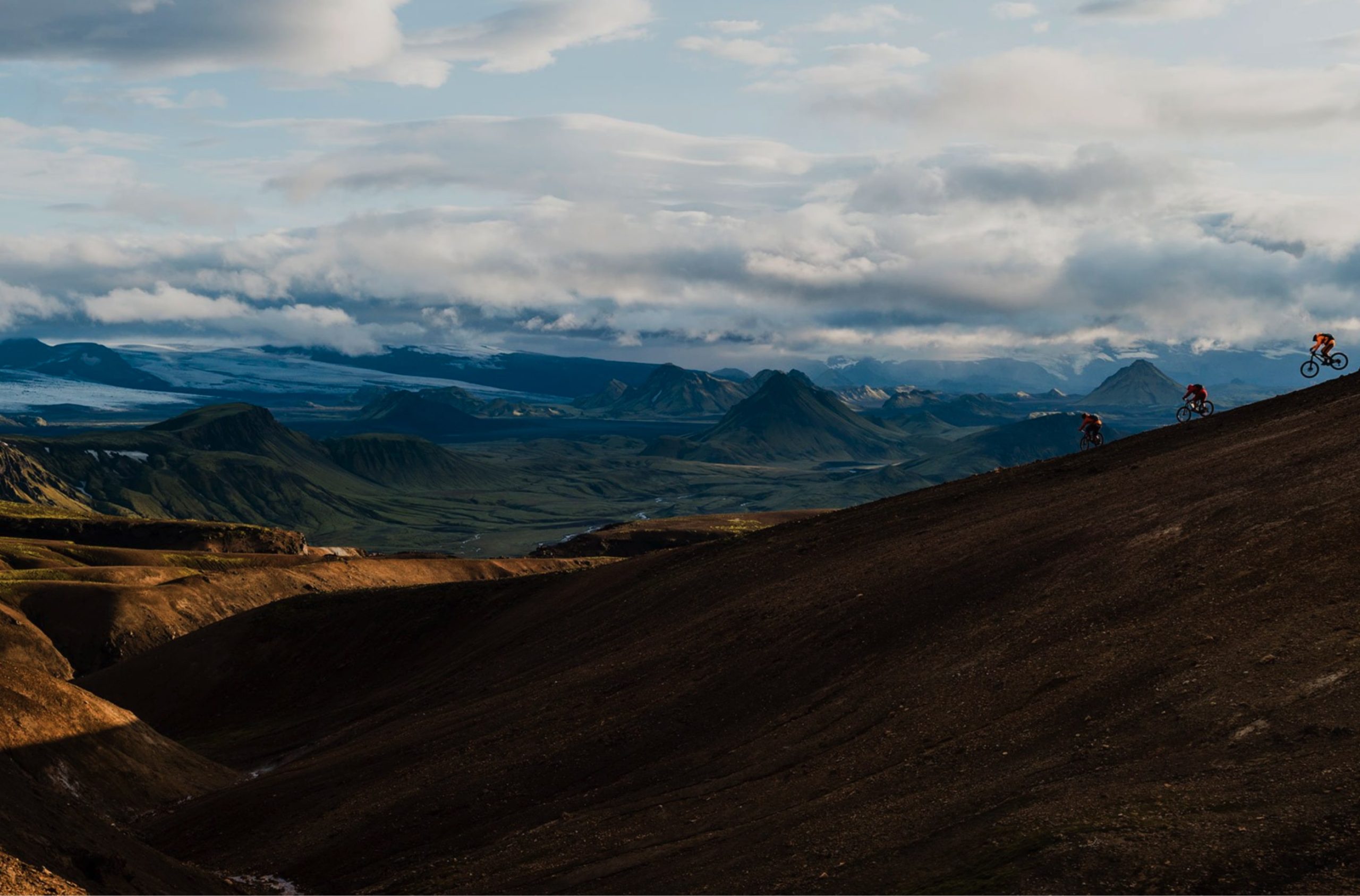September 24 2025
Mountain Biking in Bhutan: Into the Heart of the Thunder Dragon
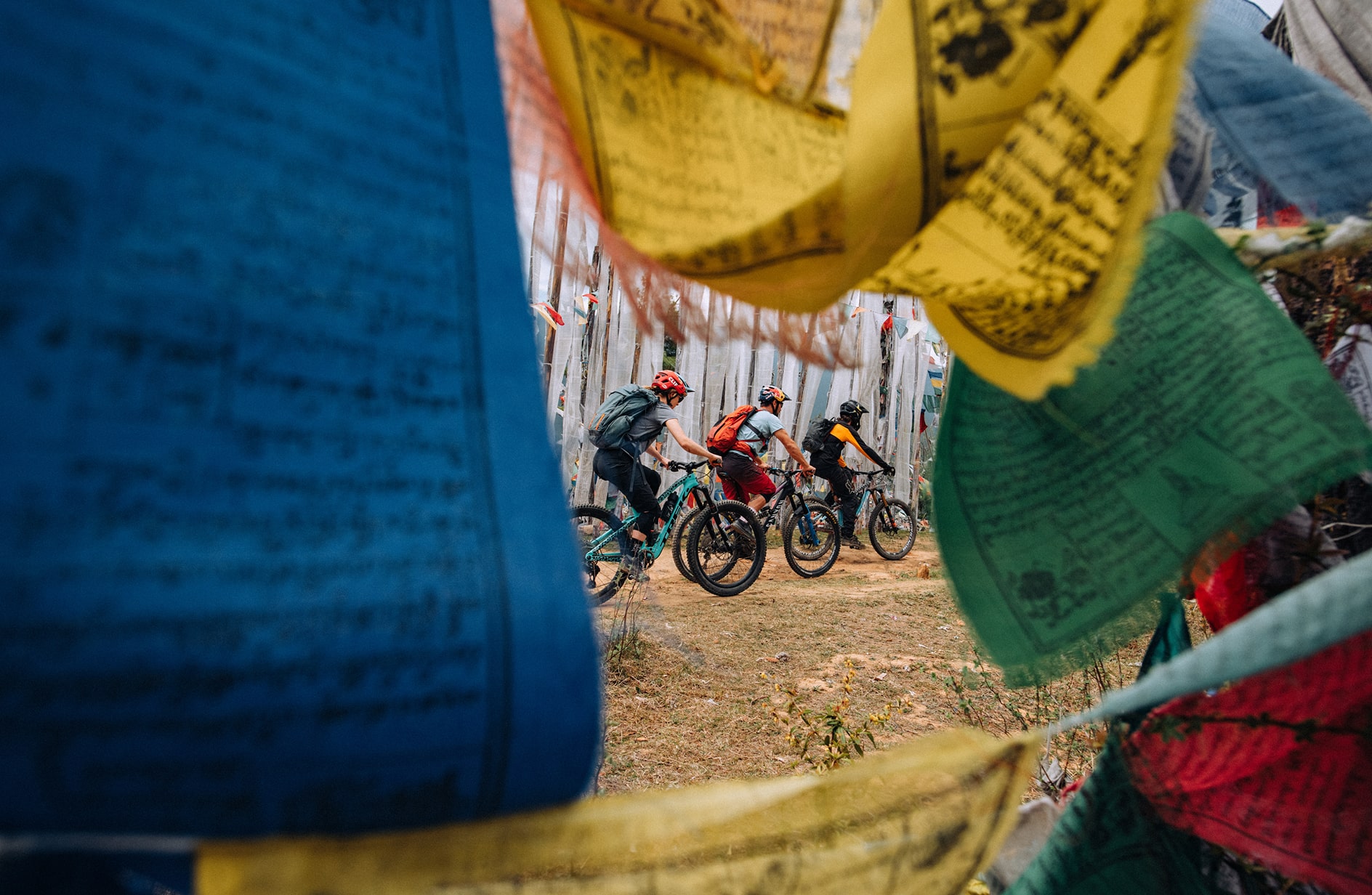
Share
- Link Link Copied
- TripAdvisor
- X
When you tell people you’re going mountain biking in Bhutan, expect puzzled looks. Most have heard of this remote Himalayan kingdom, but few know exactly where it is.
“Isn’t it closed to foreigners?”
“Wait—what’s that thing about happiness?”
“Are there really wild tigers there?”
Bhutan holds a rare kind of mystery, and it’s well deserved. Once you set foot there, you’ll understand: it’s not just another travel destination—it feels like another dimension.
Tucked between India and China, Bhutan is the last remaining Buddhist kingdom, perched high in the Himalayas. Think cliffside monasteries clinging to impossible heights, golden-roofed temples gleaming in the mountain sun, and prayer flags fluttering from misty peaks and forest trails. It’s a place where the spiritual isn’t separate from the everyday—it’s the air you breathe.

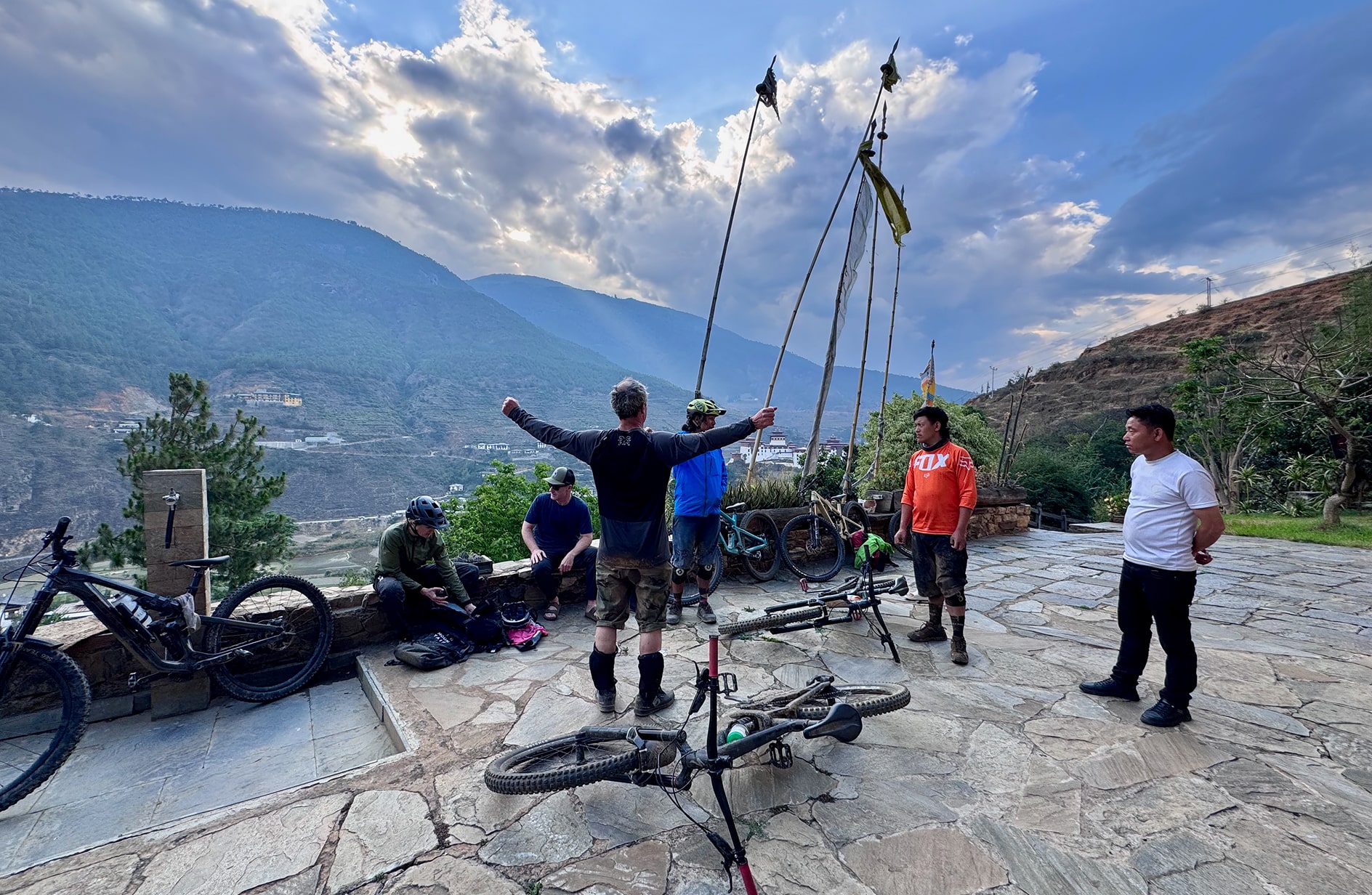
Bhutan’s secret? A carefully curated approach to tourism. The country has chosen to open up slowly and on its own terms, guided by the philosophy of Gross National Happiness (GNH)—a bold idea that prioritizes well-being, culture, and the environment over GDP. Here, ancient traditions thrive, the forests are sacred, and modernization is embraced—but only if it doesn’t erode the soul of the place.
This guide will help you navigate the essentials—what to expect, how to get there, and how to let go of your assumptions as you bike through a country that calls itself Druk Yul, the Land of the Thunder Dragon.
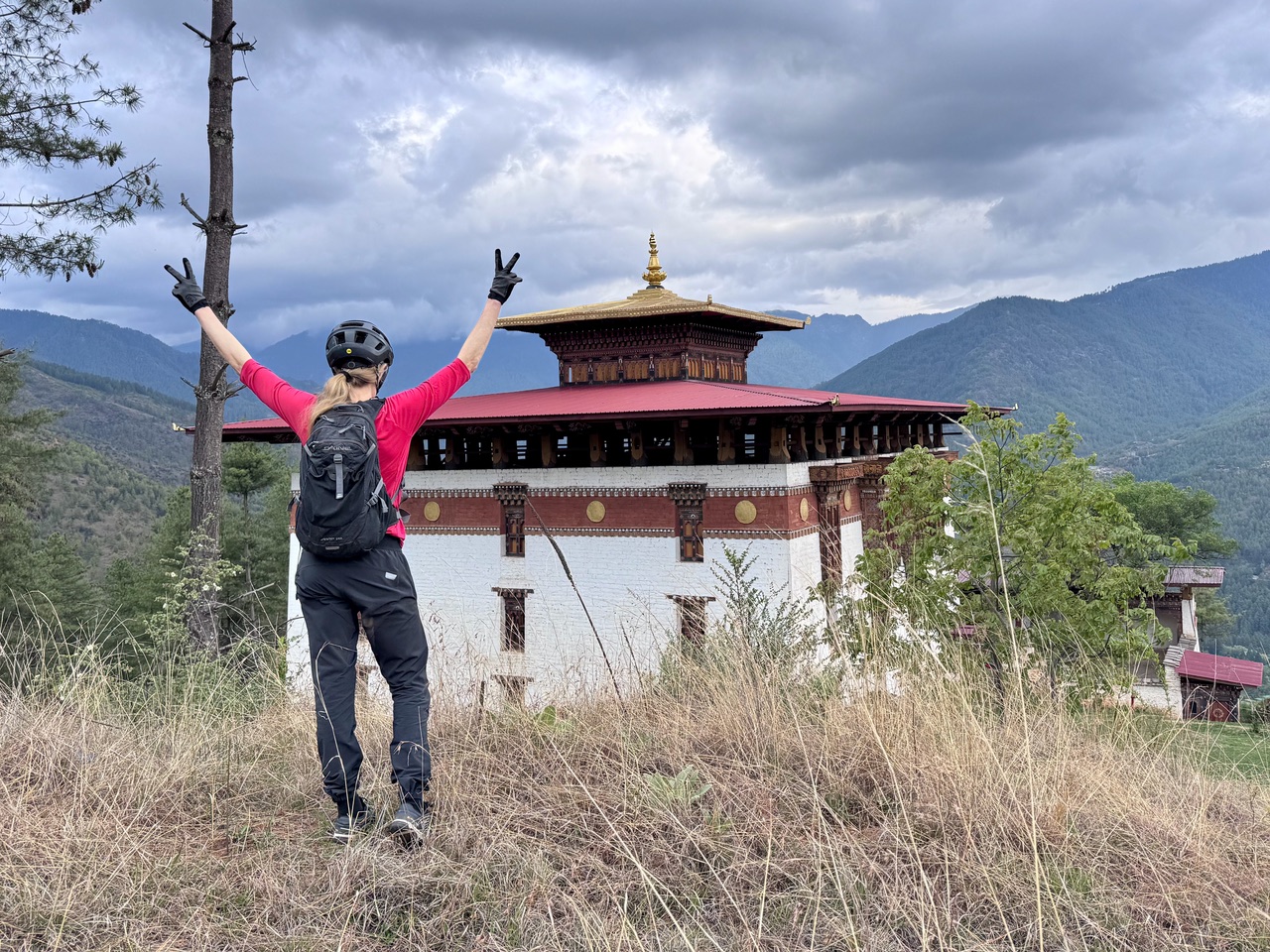
Getting There: The First Leg of the Journey
Reaching Bhutan is an adventure in itself. The kingdom is served by just two airlines—Drukair and Bhutan Airlines—and its only international airport, in Paro, is famous for being one of the world’s most challenging landings. Surrounded by Himalayan peaks up to 5,500 meters (18,000 ft), only a handful of specially trained pilots are allowed to fly there.
Flights into Paro connect through cities like Bangkok, Delhi, Kathmandu, and Singapore, but for the most epic approach, opt for Kathmandu. On a clear day, you’ll fly past Everest and get a breathtaking preview of the high-altitude world you’re about to enter.

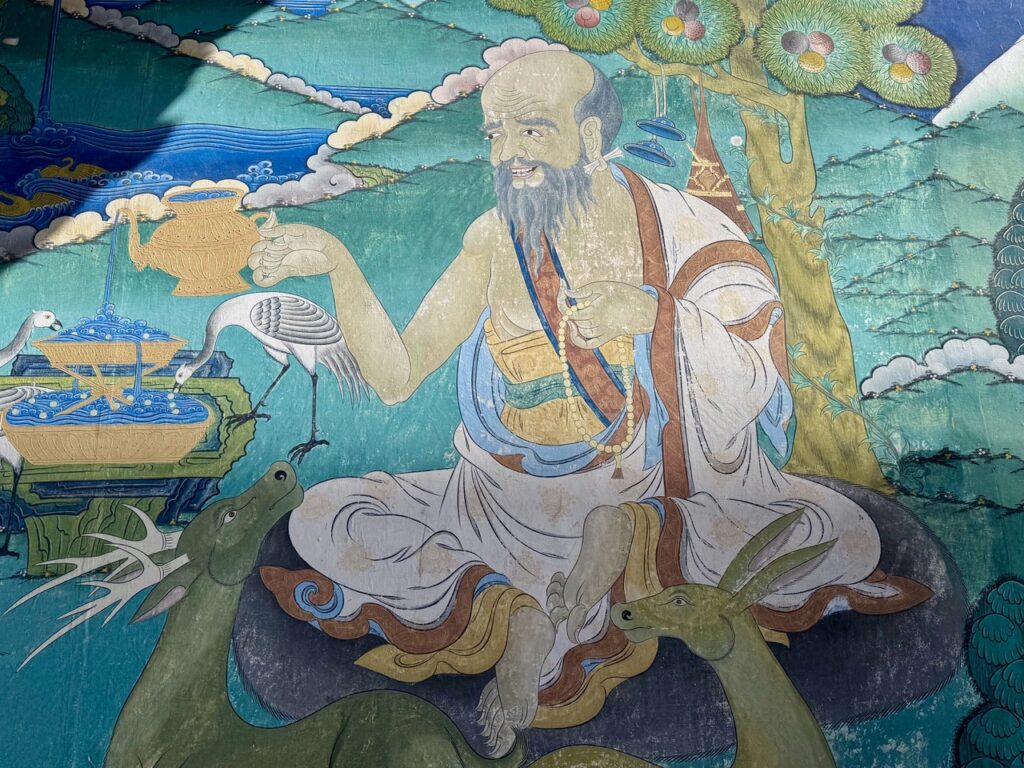
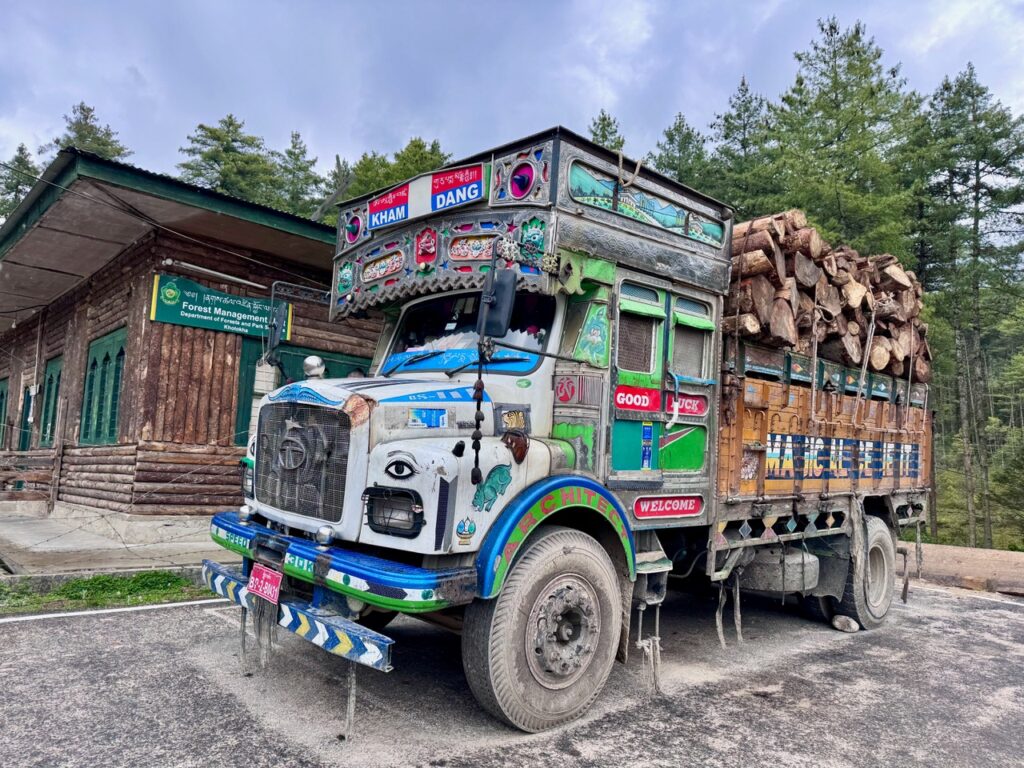
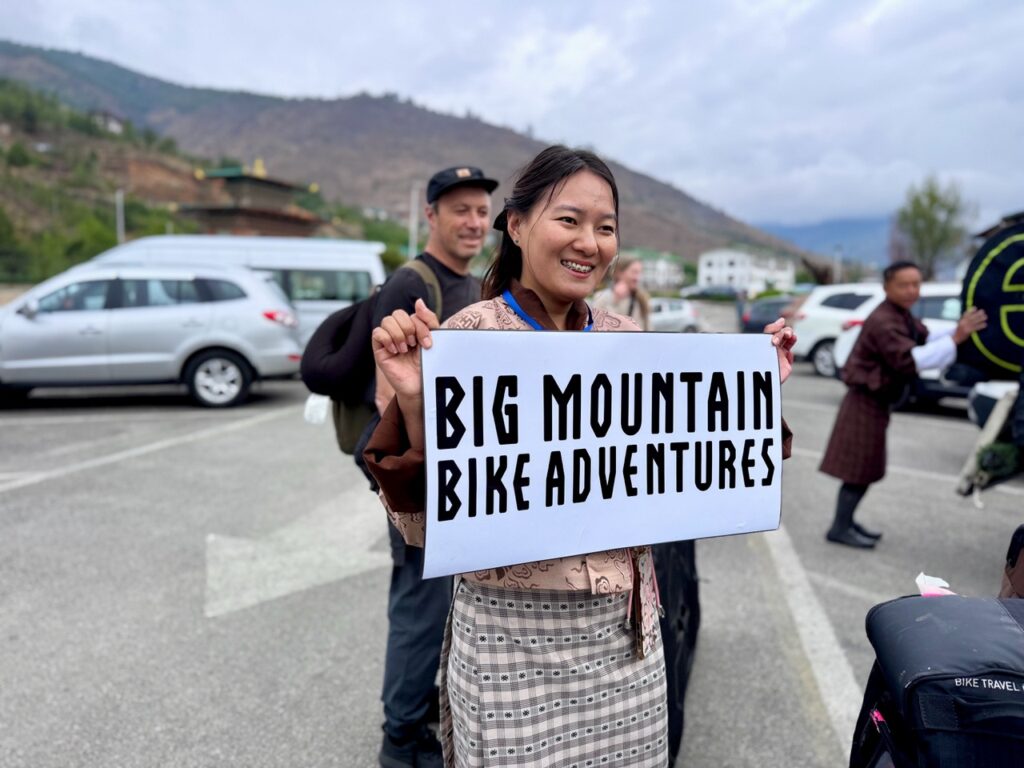
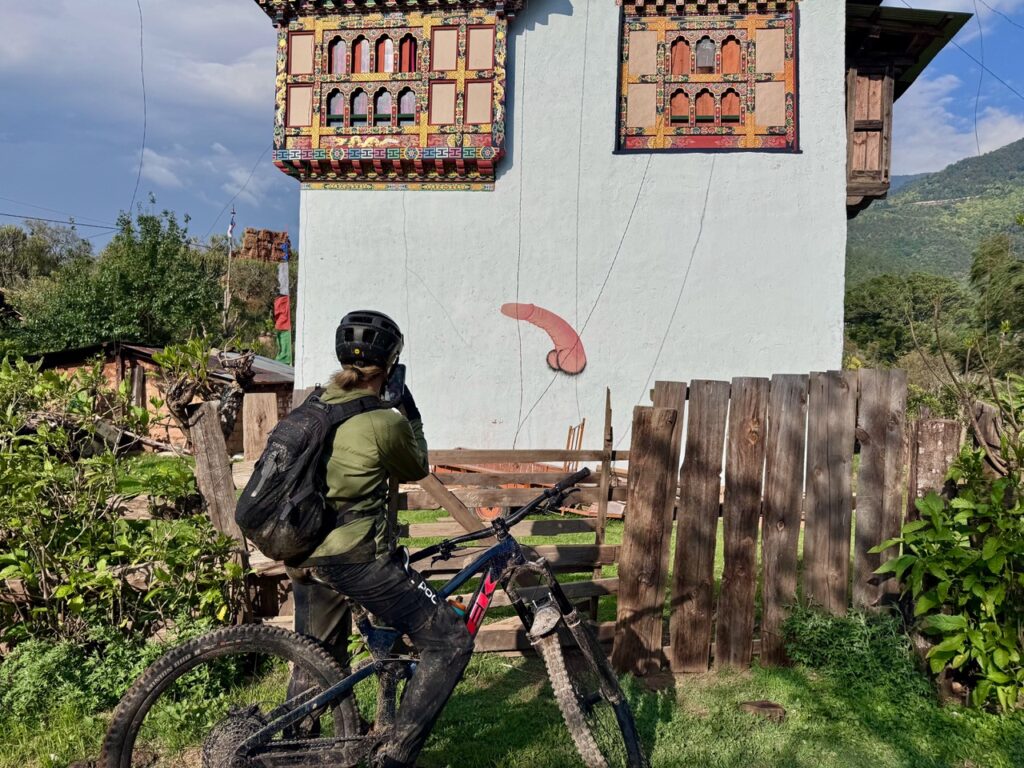
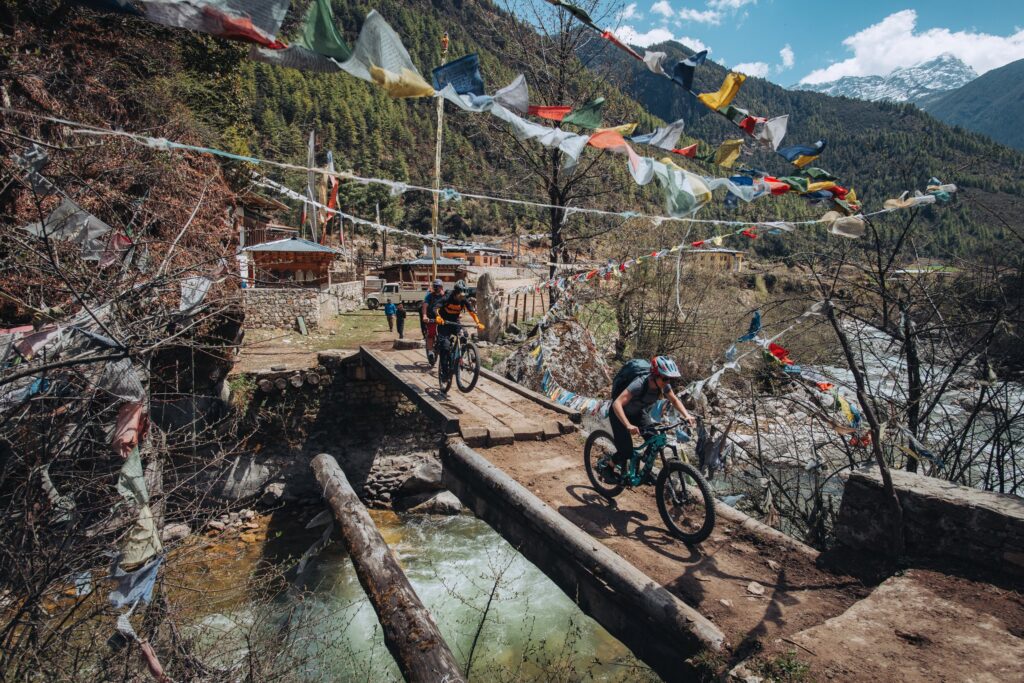
Bhutan: A Carbon-Negative Vision
Bhutan isn’t just beautiful; it’s visionary. It became the world’s first carbon-negative nation, thanks to its commitment to forest preservation and sustainable living. Roughly the size of Switzerland but with only a fraction of the population, Bhutan has enshrined in its constitution that at least 60% of its land must remain forested—a goal it consistently exceeds. Single-use plastic has technically been banned since 1999, though enforcement varies.
On the Trail: Pain, Beauty, and Wild Encounters
Mountain biking here is not easy. The air is thin. The climbs are steep. The terrain is rugged and unpredictable. You’ll sweat. You’ll curse. You’ll wonder what you got yourself into, but you’ll be completely entertained along the way.
In Bhutanese culture, fertility is closely tied to the worship of deities such as Drukpa Kunley, the “Divine Madman,” who is celebrated for using humor, irreverence, and sexual imagery to spread Buddhist teachings. As a symbol of fertility, protection, and good fortune, large male genitalia paintings and carvings are often displayed on the exterior walls of houses and temples. Far from being seen as crude, these bold images are meant to ward off evil spirits and bring blessings of prosperity, healthy crops, and children, reflecting Bhutan’s deep blend of spirituality and everyday life.
In Bhutan, the ride hurts. But like Buddhist suffering, it transforms you.
There’s something deeply meditative about the rhythm of your breath at 3,000 meters, the silence of the pine forests, the glint of a monastery far above, unreachable but always present. You’ll pedal past yak herders, across highland ridges, and along trails where tigers still roam—yes, truly. Bhutan’s wild tigers are unique for inhabiting high-altitude mountain forests, with sightings as high as 4,500 meters. A 2021–2022 national survey recorded 131 tigers in the wild—a 27% increase since 2015, thanks to strong conservation policies.
Food, Language, and Cultural Grace
Between rides, the food helps restore your spirit. Bhutanese cuisine is defined by bold, fiery flavors—chilies aren’t just a spice, they’re a way of life. Try ema datse (chilies and cheese) and kewa datse (potatoes, chilies, and cheese), and always ask your guide for local food recommendations—hidden gems are everywhere, if you know where to look.
Say “Kuzu zangpo la” (hello) with a bow—not a handshake—and you’ll earn smiles. The national language, Dzongkha, is spoken mainly in the west, but English is widely understood. Social customs lean Buddhist: humble, peaceful, deeply respectful. The deeper your bow, the more honor you show.
Let Go, Lean In
Bhutan invites a different kind of awareness. Logic and reason won’t always serve you here; intuition, patience, and openness will. In Buddhist tradition, suffering is not the end—it’s the beginning. It strips away ego, breaks down illusions, and makes space for insight.
That’s what biking in Bhutan offers: a stripping away. Of noise, of stress, of who you thought you were. In its place: stillness. Presence. Perspective.
Bhutan is not a place you “check off” a list. It’s a place that stays with you—long after you’ve left the mountains and dust behind. It’s tempting to tell everyone about it, to share the secret. But maybe… don’t. Shhhhhhh. Some places deserve to be preserved, not publicized.
Think of Bhutan as a giant retreat for the soul, a reset button for your mind and body.
A Switzerland of the East—but quieter. Warmer. Stranger. Wiser.
